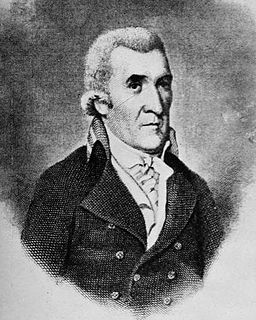Related Research Articles

William Robertson FRSE FSA Scot was a Scottish historian, minister in the Church of Scotland, and Principal of the University of Edinburgh. "The thirty years during which [he] presided over the University perhaps represent the highest point in its history." He made significant contributions to the writing of Scottish history and the history of Spain and Spanish America.

Robert John Carrington, 2nd Baron Carrington,, was a politician and a baron in the Peerage of Great Britain. He was the son of Robert Smith, 1st Baron Carrington, and Anne Boldero-Barnard. He adopted the name "Carrington" in 1839.

William Wright (1735–1819) was a Scottish physician and botanist.

The Livingston family of New York is a prominent family that migrated from Scotland to the Dutch Republic, and then to the Province of New York in the 17th century. Descended from the 4th Lord Livingston, its members included signers of the United States Declaration of Independence and the United States Constitution. Several members were Lords of Livingston Manor and Clermont Manor, located along the Hudson River in 18th-century eastern New York.
John Heathcote FRS was a British Member of Parliament.
The Sheriff of Stirling was historically the office responsible for enforcing law and order in Stirling, Scotland and bringing criminals to justice. Prior to 1748 most sheriffdoms were held on a hereditary basis. From that date, following the Jacobite uprising of 1745, the hereditary sheriffs were replaced by salaried sheriff-deputes, qualified advocates who were members of the Scottish Bar.
References
- ↑ "Fellows of the Royal Society". London: Royal Society. Archived from the original on 2015-03-16.